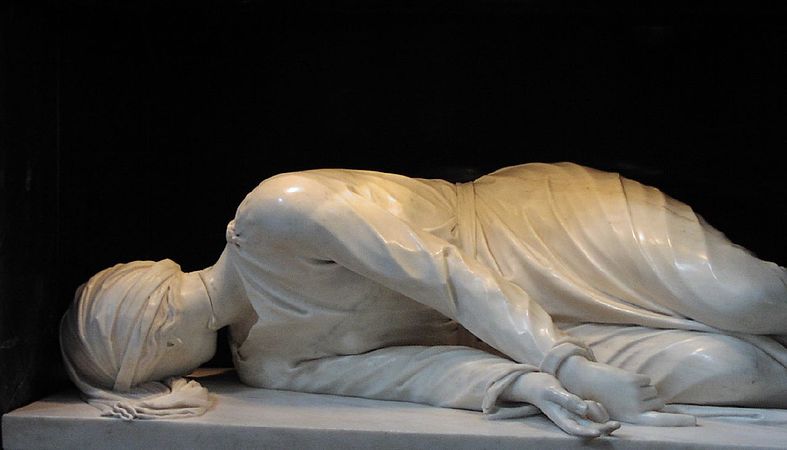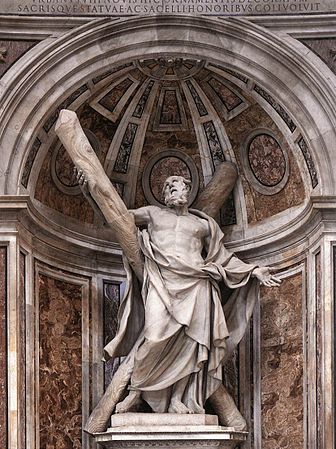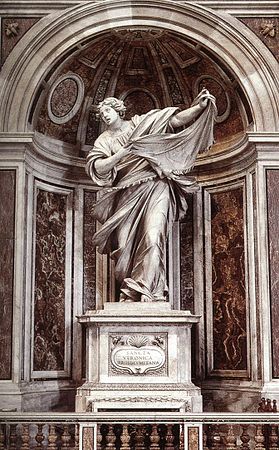Generous papal commissions made Rome a magnet for sculptors in Italy and across Europe. They decorated churches, squares, and, a Rome specialty, the popular new fountains created around the city by the Popes. Stefano Maderna (1576–1636), originally from Bissone in Lombardy, preceded the work of Bernini. He began his career making reduced-size copies of classical works in bronze. His major large-scale work was a statue of Saint Cecile (1600, for the Church of Saint Cecilia in the Trastevere in Rome. The saint’s body lies stretched out, as if it were in a sarcophagus, evoking a sense of pathos.[9]
Another early important Roman sculptor was Francesco Mochi (1580–1654), born in Montevarchi, near Florence. He made a celebrated bronze equestrian statue of Alexander Farnese for the main square of Piacenza (1620–1625), and a vivid statue of Saint Veronica for Saint Peter’s Basilica, so active that she seems to be about to leap from the niche.[9]
Other notable Italian Baroque sculptors included Alessandro Algardi (1598–1654), whose first major commission was the tomb of Pope Leo XI in the Vatican. He was considered a rival of Bernini, though his work was similar in style. His other major works included a large sculpted bas-relief of the legendary meeting between Pope Leo I and Attila the Hun (1646–1653), in which the Pope persuaded Attila not to attack Rome.[10]
The Flemish sculptor François Duquesnoy (1597–1643) was another important figure of the Italian Baroque. He was a friend of the painter Poussin, and was especially known for his statue of Saint Susanna at Santa Maria de Loreto in Rome, and his statue of Saint Andrew (1629–1633) at the Vatican. He was named royal sculptor of Louis XIII of France, but died in 1643 during the journey from Rome to Paris.[11]
Major sculptors in the late period included Niccolo Salvi (1697–1751), whose most famous work was the design of the Trevi Fountain (1732–1751). The fountain also contained allegorical works by other prominent Italian Baroque sculptors, including Filippo della Valle Pietro Bracci, and Giovanni Grossi. The fountain, in all its grandeur and exuberance, represented the final act of the Italian Baroque style.[12]

Post time: Aug-11-2022


